Performance
- 200 days weights 317kg bulls, 290 kg heifers
- Long year at grass, forward creep grazing and good health plan
Weanlings vaccinated for housing –
It’s a Great Time to Be a Suckler Farmer!
2025 has been an exceptional year for calves. You could see they were doing well on the farm, but the proof is on the scales.
According to the weanling performance reports:
Grass supply was tight at times, but we always stayed just ahead of demand. I put this down partly to good soil fertility on the farm and partly to a “little but often” fertiliser approach once moisture was in the ground.
The calves have been able to forward creep graze from only a couple of week, so they have the best of milk from their mothers and then the best pick of grass.
For the last number of years, I have incorporated clover into all the reseeds, including red clover silage, this has also improved animal performance at grass. When the calves are forward creep grazing, you can see them picking the clover over the ryegrass. Its more digestible and higher in protein, improving average daily gain.
After weighing I introduced meal, its rolled barley mixed with a 14% ration, this has lots of energy and enough protein as the grass in the autumn is full of protein. They will be on 2kgs until housed.
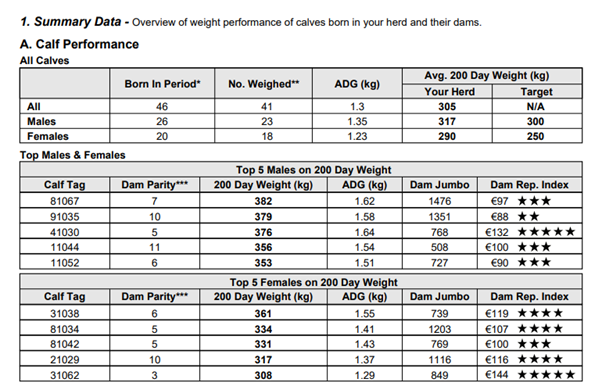
Figure 1 ICBF weaning performance report
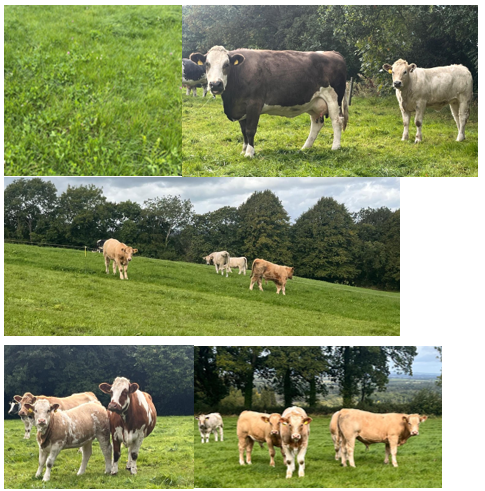
Figure 2 Photos clockwise – Clover in reseeds, Calf from the new CH stock bull with his dam, Calves forward creep grazing, cows and calves grazing
Excellent Performance of Dairy Beef Heifers
This year, my dairy heifers have performed exceptionally well, with an average daily gain of 0.98 kg per head per day since birth. They have been fed 1 kg of meal per day alongside good grass. This year, for the first time, I also had a dairy cow. A calf lost his mother, I had the opportunity to buy one and I did. She reared that calf and two dairy cross heifers. The calves did the same average daily gain as the other two dairy bred heifers but with no meal.
In May, the heifers were treated with a doramectin product due to coughing. This has a long-lasting effect, allowing the calves to recover. Since then, they have received two white drenches. These only target worms present at the time of dosing and do not provide persistent protection, allowing a period of natural infection to help build their own immunity against lung and stomach worms. Full immunity will not be reached until they are almost 18 months old.
Doramax persistency as per the data sheet see extract in Figure 3 . Following product administration, efficacy against re-infection with the following parasites persists for the period indicated:
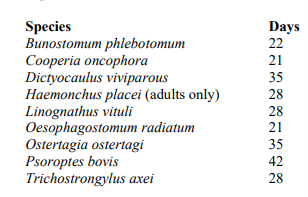
Figure 3 Extract from Doramax datasheet
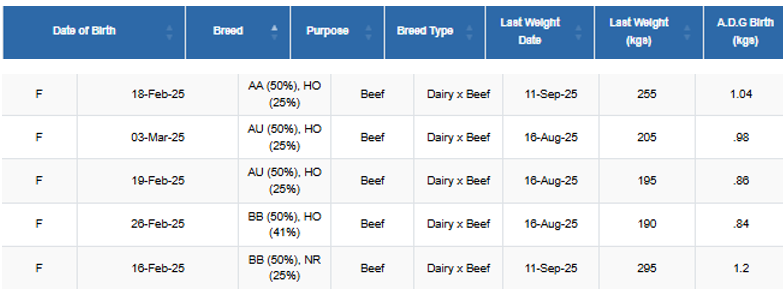
Figure 4 Exert from the ICBF weighing sheet showing the dairy bred calves last weights
Breeding
43 cows went to the bull and 40 have scanned in calf, an excellent result. They are also very compact, with, I am hoping more that 80% calving in the first six weeks.
Five older cows were not served; once weaned, they will be culled. The three cows not in calf have already been weaned and sent to the factory, achieving an excellent average price of €2,237.
I had nine suitable heifers, and seven are in calf to calve at 24 months. They reached around 60% of their mature weight at service. I usually buy first-cross heifers from the dairy herd and keep whatever suitable heifers I have of my own. I want a planer cow to take a strong bull, and I want milk, so its only a few Charolais sired heifers from the milkiest cows will fit the bill. I have bought a Lm bull this year, he is strong on carcass at 30.3, has a little milk at plus 2.20kg, so on first cross cows, he should produce nice replacement heifers. My Charolais bull on the other hand is minus 2.20kg in milk and +40.8kg on carcass, only a very milky cow could produce a replacement with enough milk form this bull
Pneumonia
The calves received their first Bovipast shot in early August and their second shot for pneumonia when weighed on 9 and 11 September. They also received a live intramuscular IBR vaccine, providing protection against IBR for six months.
Stomach and lung worms
After some rain, a few weanlings were coughing, so I treated them with Albex, a white drench that kills lung and stomach worms but does not provide persistent protection. This will give them a chance to have some burden and therefore build immunity for adult life.
I completed a Nutrient Management Plan (NMP) early in the year and received my allowances. The NMP also produces soil fertility maps:
As a result of the soil samples, I change the fertiliser I am using. I applied 13-6-20 fertiliser to the out farm to boost P and K, and I have lime ready to apply to improve pH.
At home I am using slurry and mostly pro urea as the P &K here is already good. The slurry is mainly going to silage ground.
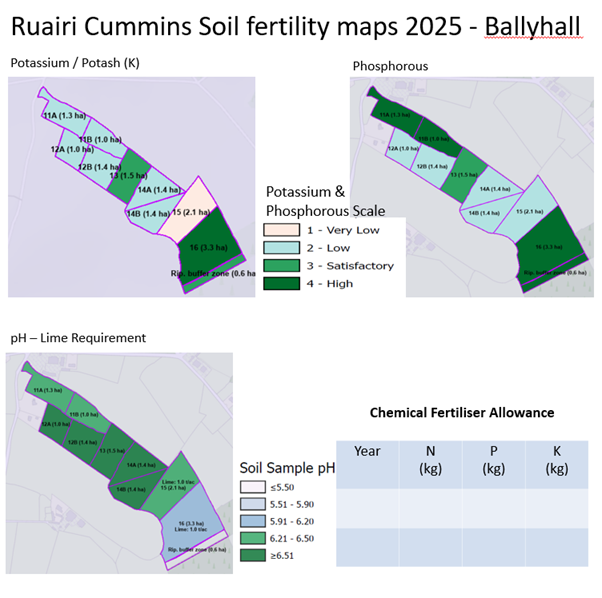
Figure 5 Soil fertility maps for out farm in Ballyhall
Since the end of August grass has taken off with the rain, my reseed has also taken off.
I reseeded 5 acres with a red clover silage mix. I have 5 acres already and it has yielded 75 bales in three cuts. It’s very dry and I will feed to the bulls to maximise weight gain. The last cut was on the 23rd of September, but I was lucky with the weather and the ground conditions are still very good here in Kilmoganny.
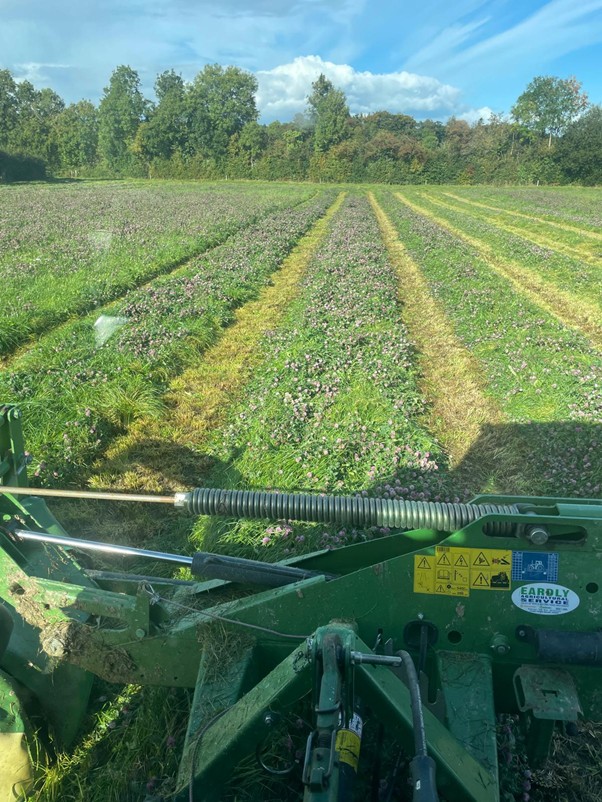
Figure 6 Silage being mowed 23rd September 2025
I had applied for the scheme when I was completing my BISS application. This gives you a payment of €120 per acre, easily covering the cost of the grass seed.
I grazed off the field, then sprayed it with a generic form of glyphosate. Unfortunately, I didn’t get the kill I was hoping for, if I was to do it again, I would consider using a higher rate of spray or using a branded form of Glyphosate. I read similar reports in the Journal.
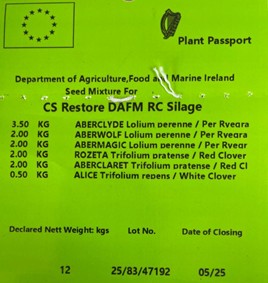
Figure 7 Label from grass seed for red clover silage
The seed mix I used has 4kg of red clover, 0.5 kg of white clover and 7.5kg of ryegrass. I was hoping for just Aberclaret and Fearga varieties, as the research in Grange is chowing them as the most promising, but I have used this mix before and its good.
It was sown using a moore drill and then rolled.
I applied two bags of 13-6-20 and two bags of granulated lime per acre at sowing. Growth was slow due to dry weather, but once the grass came through, I used a clover-safe spray. There are two main options: Clover Max, which can be used if you have red clover in your and ProClova, which is not licensed for use on red clover in its first year as it can severely damage it.
It will be lightly grazed before closing to promote tillering and ensure light can get to the base of the plants over the winter.